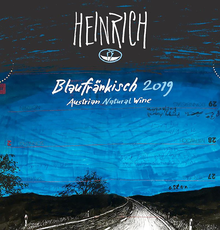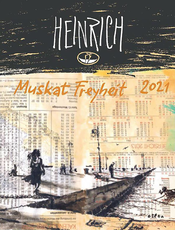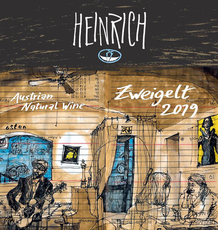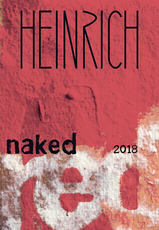Weingut Heinrich
COUNTRY: Austria
REGION: Burgenland
Gernot and Heike Heinrich established Weingut Heinrich in 1990 with a single hectare of vines. They were one of the first producers in the area to start focusing on making age-worthy red wine, rather than simple table white wines. Initially focusing on Blaufrankisch, they now cast a wider net, experimenting across different varieties and winemaking styles.
The Heinrich winery is in Gols, on the northeast side of the Neusiedlersee in Austria. Their vineyards are spread out – from Gols, all the way up and around to the northwest side of the lake. On the east side, the vineyards are planted on alluvial soils and red gravel; the air is warmer here, where the Pandorfer Platte rises above the eastern shores of the lake. In the west, around Leithaberg, limestone and schist take over; here, the mountainside vines get longer sun exposure and the air is cooler. Read more about their particular sites here.
Gernot and Heike transitioned their estate to biodynamic farming in 2006, joining the Demeter, Pannobile, and Respekt associations. They believe biodynamic practices offer the most healthful approach for both the vines and the people who work them. The Heinrichs work mostly with local grape varieties: Blaufrankisch, Neuburger Grauer Burgunder, Roter Traminer, Weissburgunder, Zweigelt, and St. Laurent. Chardonnay, Pinot Noir, and nowadays some Merlot are also in the mix. They harvest their grapes by hand, and vinify through native yeast fermentations. The white wines see extended skin contact, whereas the reds undergo lighter macerations. All of the wines are aged on their lees in used barrels, and left unfined and unfiltered. Sulfur additions vary, but are always minimal.
CUVÉES
“Out of the Dark”
Grape: Blaufränkisch
Soil: Limestone, schist
Winemaking: one week maceration
Aging: in amphora
“Into The Light”
Grape: Sauvignon Blanc
Vineyard: hillside terraces, 400-550m elevation
Soil: grey, black, and red schist
Average Age of Vines: 35 years
Winemaking: maceration on the skins 2-4 days, spontaneous fermentation
Aging: 12 months in steel tank and oak barrel
Added S02: 10 mg/L
Chardonnay Leithaberg
Grape: Chardonnay
Soil: Limestone and slate
Winemaking: Handpicked mid-September and left for some hours on the skins and stems. Spontaneous fermentation and malolactic fermentation.
Aging: 7 months on its lees in large oak casks
Graue Freyheit
Grape: Weißburgunder, Grauer Burgunder, Chardonnay, Neuburger
Soil: Schist
Winemaking: Harvested by hand in early September, fermented on its own yeasts and largely left on the skins for two weeks before gentle application of the basket press. Spontaneous malolactic fermentation.
Aging: 17 months in amphorae then used oak casks on its own lees
Weisze Freyheit
Grape: Weissburgunder, Muskat Ottone
Soil: Lime sandstone and mica-schist
Winemaking: Handpicked mid-September, spontaneous fermentation with one fourth left on the skins for 14 days. Malolactic fermentation.
Aging: 21 months on the lees in large oak barrels
Blaufränkisch
Grape: Blaufränkisch
Soil: Limestone and schist
Winemaking: Handpicked end of August, spontaneous fermentation, two weeks maceration on the skins in wooden fermentation vat and steel tank.
Aging: 31 months maturation in wooden vats and 500-litre oak barrels
Pinot Noir
Grape: Pinot Noir
Soil: Limestone
Winemaking: Handpicked at the beginning of September, spontaneous fermentation, one week maceration on the skins, gently basket pressed. Matured for 8 months on the lees in wooden vats.
Aging: Wooden vats
Naked Rosé
Grape: Blaufränkisch
Soil: Limestone and schist
Winemaking: Spontaneous fermentation and maceration for a few hours, refining on its own fine lees.
Aging: 5 months in used oak barrels
“Oh When The Saints” Pet Nat
Grape: St. Laurent
Soil: Mica schist
Winemaking: whole bunch direct press, fermentation starts in steel tank, bottled after three weeks
Aging: in bottle, disgorged in March
Blaufränkisch Leithaberg
Grape: Blaufränkisch
Soil: Limestone, sandstone, and mica schist
Winemaking: Handpicked from mid-September to the beginning of October, spontaneous fermentation, three weeks maceration on the skins in wooden fermentation vats, gentle basket press.
Aging: 38 months in amphorae and in used 500-litre oak barrels
Muskat Freyheit
Grape: Muskat Ottonel, Weißburgunder
Soil: sandstone and mica schist
Winemaking: Handpicked mid-September, fermented spontaneously and left on the skins for 15 days in amphoras. Gently basket pressed, malolactic fermentation.
Aging: 9 months in amphoras on its own lees
Pinot Freyheit
Grape: Pinot Noir
Soil: Mica-schist
Winemaking: Harvested by hand in mid-September; spontaneous fermentation, left on the skins for one week (50% whole clusters). Matured on its own indigenous yeasts in amphorae.
Aging: Amphorae for 8 months
St. Laurent
Grape: St. Laurent
Soil: Mica-schist
Winemaking: Manual harvest at the beginning of September, spontaneous fermentation, maceration for three weeks in wooden fermentation vat and steel tank, gentle basket press.
Aging: maturation for 20 months in wooden vats and used 500-litre oak barrels
Zweigelt
Grape: Zweigelt
Soil: Limestone and schist
Winemaking: Handpicked end of August, spontaneous fermentation, two weeks maceration on the skins in wooden fermentation vat and steel tank.
Aging: 31 months maturation in wooden vats and 500-litre oak barrels
Naked Red
Grape: St. Laurent, Blaufränkisch, Zweigelt
Soil: Limestone and schist
Winemaking: The grapes are harvested by hand from mid-September to early October and when they reach the winery they ferment with their own yeasts and macerate with their skins in wooden and stainless steel fermentation vats.
Aging: 1 year+ in wooden barrels
Naked White
Grape: Pinot Blanc, Chardonnay, Pinot Gris, Grüner Veltliner, Welschriesling
Soil: Limestone and schist
Winemaking: Handpicked at the beginning of September and macerated with the stems overnight. Spontaneous and malolactic fermentation. Matured on its natural yeast lees in used large oak casks and bottled unfiltered with minimal sulphur.
Aging: Old oak

















